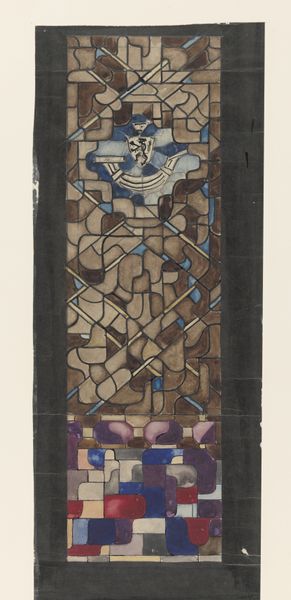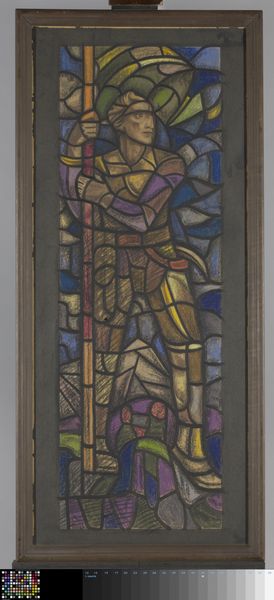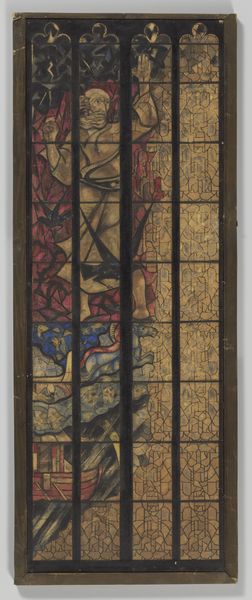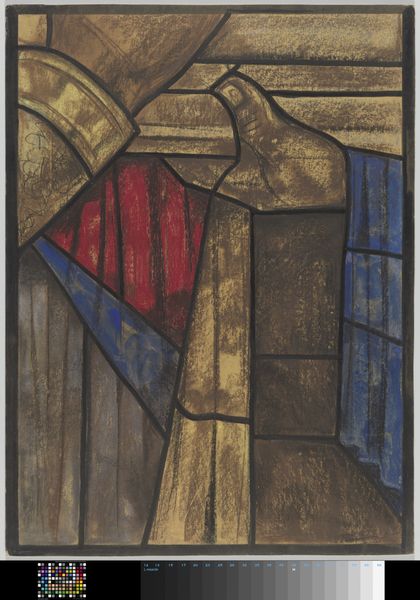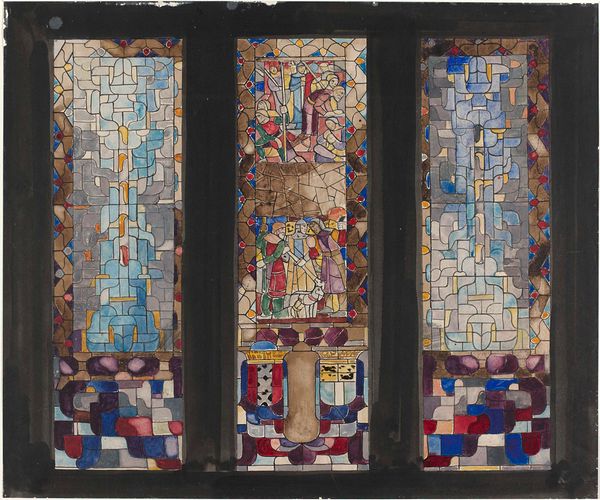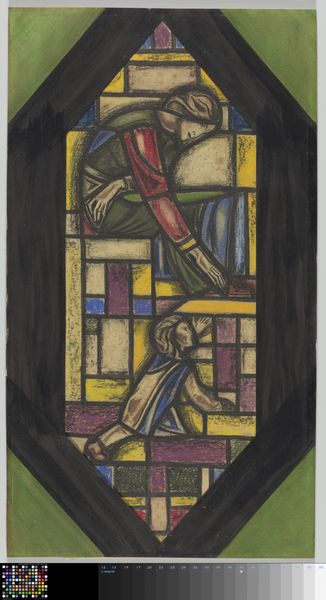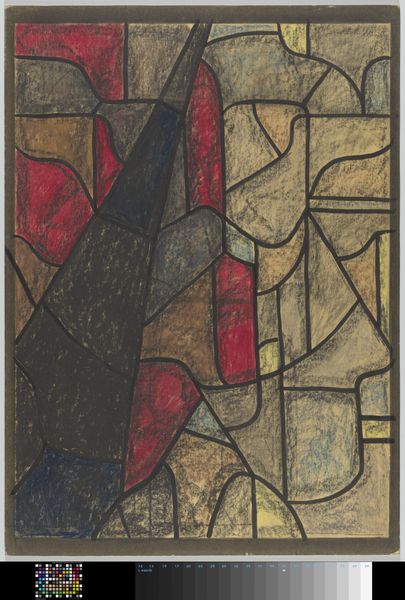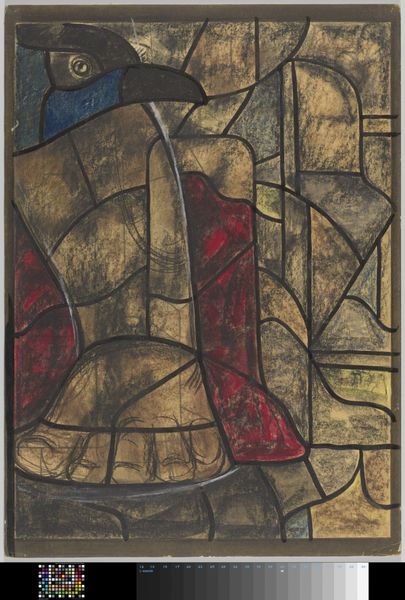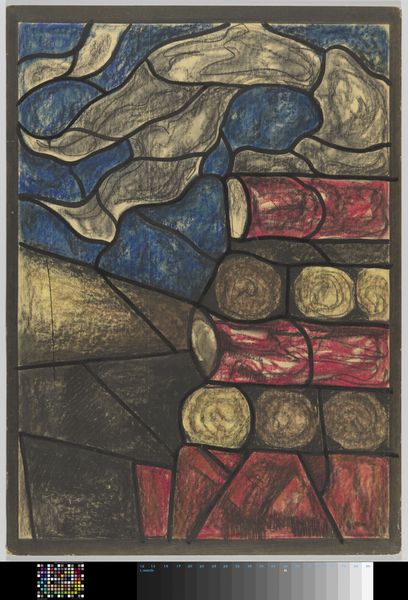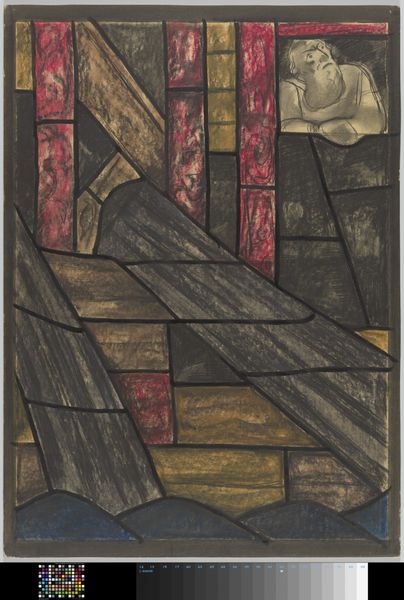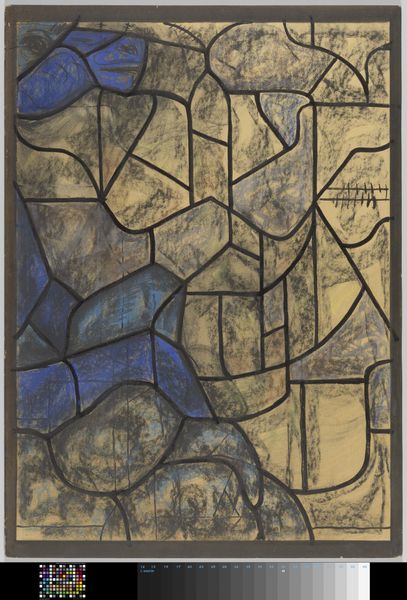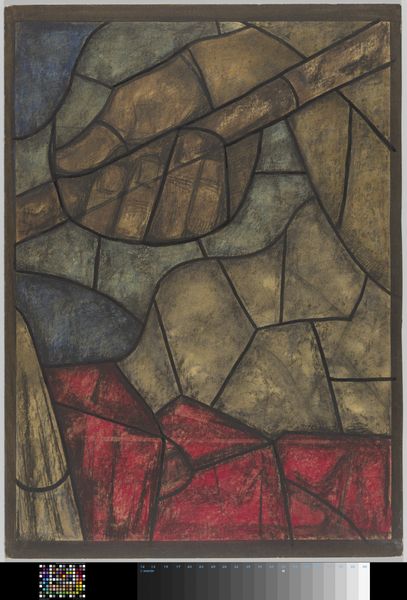
Ontwerp voor raam in het Zuidertransept van de Dom te Utrecht c. 1878 - 1938
0:00
0:00
drawing, mixed-media, stain, print, glass
#
drawing
#
mixed-media
#
medieval
#
stain
# print
#
glass
#
geometric
#
symbolism
#
mixed media
Dimensions: height 1115 mm, width 780 mm, height 1090 mm, width 720 mm
Copyright: Rijks Museum: Open Domain
Curator: Before us is "Ontwerp voor raam in het Zuidertransept van de Dom te Utrecht," a window design created circa 1878-1938, here in the Rijksmuseum, by Richard Nicolaüs Roland Holst. It’s rendered with mixed media, stain, and what appears to be glass or perhaps a simulation of it. Editor: My initial reaction is one of fragmentation and somber reflection. The geometry pulls the eye across segmented narratives; a fractured story told in muted tones and sharp divisions. It almost reads as an emotional map. Curator: Precisely. The symbolism deployed speaks volumes. Note the crown of thorns, the stylized tears. The intention isn't merely decorative; Holst is engaging with powerful Christian iconography. Editor: Absolutely, and the chosen materials amplify that. I’m interested in the act of combining these different mediums to design something for a medium as permanent as stained glass. Was he considering how light would physically alter these drawings, transforming two-dimensional images into these shimmering panels in the cathedral? What decisions around paint type or color would be involved to manage and amplify a viewer's perception of light within sacred space? Curator: It’s about transcendence through form. Observe how the geometric abstractions provide the viewer with opportunities for interpretive freedom. The very style itself invites contemplation. There’s a push and pull here, a structural push towards an objective sacred message communicated through individual subjective engagement. Editor: I see your point. This interplay really comes to light through the craft itself – in the planned construction. We should keep in mind what kind of training he had, what sorts of collaborative production methods with glass workers he might have engaged in, and the cultural significance placed on craft to evoke faith in the medieval period. Curator: This highlights the brilliance of Roland Holst’s work; he harnesses material qualities as tools. This symbiosis ensures that meaning resonates on multiple levels, fostering the potential for personal insight while anchoring itself within collective mythologies. Editor: A successful combination, then. Considering both production and composition provides deeper insights to a new appreciation for symbolism and structure, creating a profound connection.
Comments
No comments
Be the first to comment and join the conversation on the ultimate creative platform.
